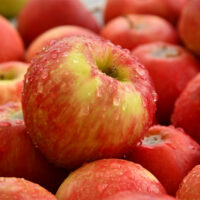Causes, symptoms, and management of UTIs

As the name suggests, urinary tract infections (UTIs) are infections that affect the urinary system. They can impact a part of the system or the whole of it. In most cases, a bacterium called Escherichia coli causes UTIs, leading to frequent urination, pain or burning sensation when urinating, pain in the lower back or side, and other symptoms. Most UTIs are easily treatable with simple home remedies and lifestyle changes.
Causes
The urinary tract is self-sufficient in preventing and fighting off infections. It kills most bacteria and prevents diseases from developing. However, the tract’s security system sometimes misses a microbe, causing an infection. The bacteria enters the system through the urethra, spreads into the bladder, and grows.
UTIs are commonly seen in women and generally affect the urethra and the bladder. The urethra’s proximity to the anus makes it easier for bacteria to make its way into the urinary tract.
While UTIs are most commonly caused by Escherichia coli or E. coli, they may result from other bacteria too. If left untreated, it can lead to other complications.
Symptoms
UTIs might not always show signs or symptoms, making diagnosis difficult during the early stages. However, the following signs may sometimes occur:
- Burning sensation when urinating
- Strong urge to urinate
- Strong odor in urine
- Cloudy appearance of urine
- Unsatisfactory and frequent urination
- Signs of blood in urine
- Pelvic pain
In some cases, adult patients might also experience high fever, vomiting, nausea, back and side pain, and shaking and chills. These signs are common if the UTI is present in the kidney. However, if the infection is in the bladder, the symptoms include painful and frequent urination, pelvic pressure, and lower belly discomfort. Discharge and burning are present when the infection affects the urethra.
Management
It is crucial to see a doctor and seek treatment for UTIs. The expert may ask patients to increase their water intake and drink non-carbonated and non-sugary fluids. Doctors may also ask individuals to urinate when they have the urge and not delay the bathroom break. Hot water bags and warm baths can help relieve the pain and other symptoms.





